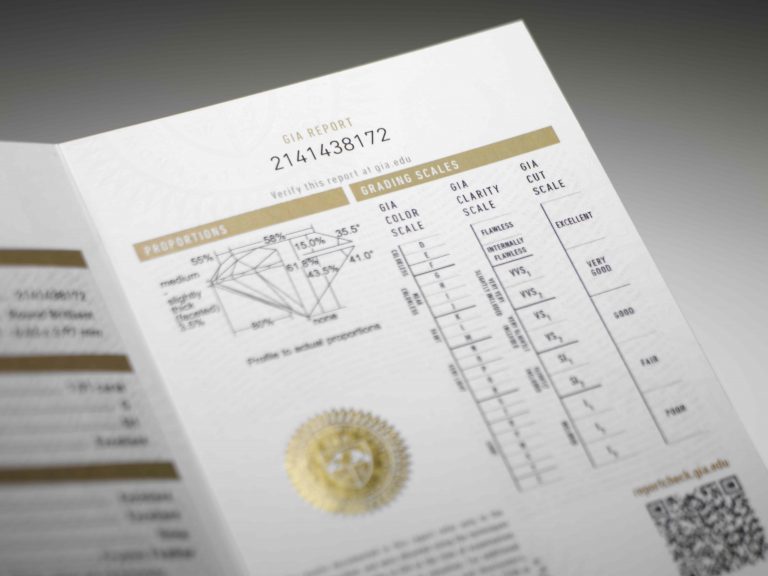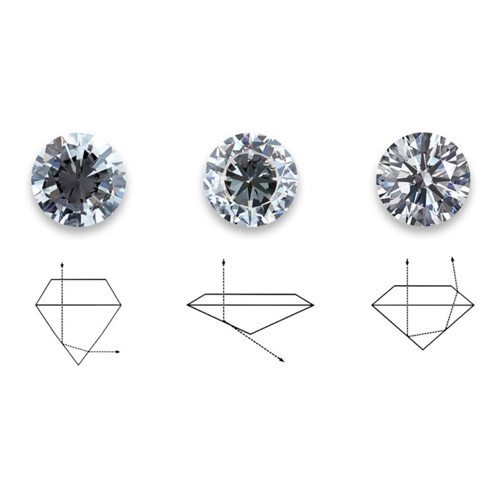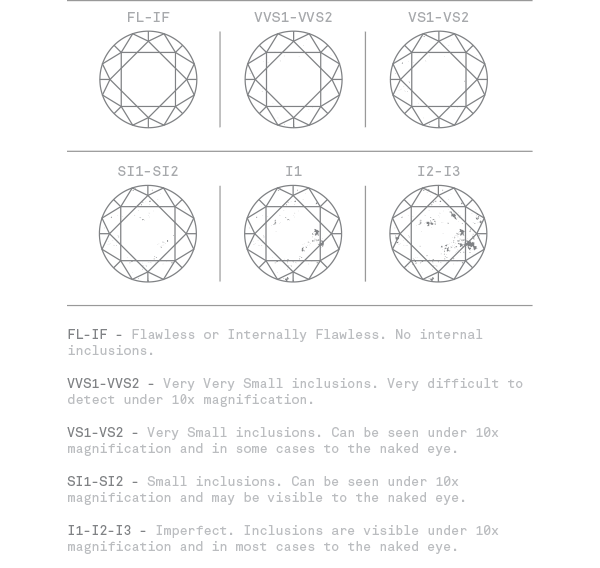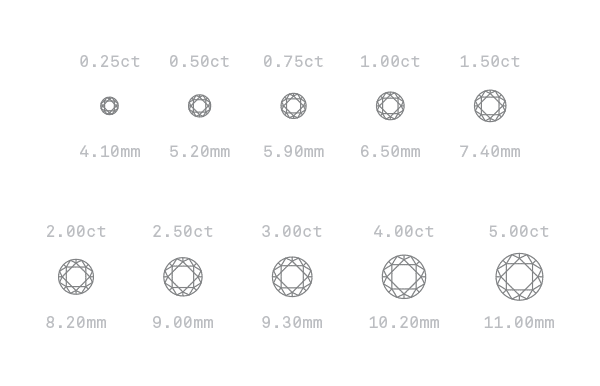You know that diamonds are extremely valuable and highly desired in fine jewelry, but do you know how that value is determined? Here is our guide to understanding diamond quality.
When you buy a diamond, you’re purchasing a finished product, cut and completed by human hands.
But where did that diamond begin? Its beauty started in nature, where the Diamond developed in earth’s upper mantle. As it formed in nature, the diamond developed its color and clarity (unique characteristics and inclusions). Once mined, the raw Diamond moves on into the hands of a diamond cutter and polisher, who uses their expertise to determine the shape and size each diamond should take based on its existing attributes. Once the cutter is finished, a gemologist can then grade the Diamond cut (symmetry variations and polish characteristics) and determine the carat weight.
The color, clarity, cut & carat weight combination — a natural product honed by a qualified gemologist — is what determines the quality of a given diamond.
All About Diamond Grading
In the 1940s, diamond professionals at the Gemological Institute of America (GIA) established a systematic method for evaluating diamond quality. The GIA is a nonprofit and the foremost source of gem knowledge, standards, and education. Its International Diamond Grading SystemTM relies on what are called the “4Cs”: Cut, Clarity, Color, and Carat Weight to determine a particular diamond’s value.
Before this grading system was instituted, there was no standardized method or best practices for diamond grading and communicating a particular diamond’s grade results. The GIA standards brought consistency and integrity to the business of cutting, polishing and selling diamonds.
GIA also created a Diamond Grading Report that includes information about a particular diamond, including its shape, its 4Cs ratings, detailed measurements and any known treatments.

Understanding the 4Cs of Diamond Grading
Here’s a closer look at every facet of diamond grading, used globally by jewelers and gem professionals.
CUT
How a diamond is cut informs how it will interact with light: The more interaction, the more sparkle. “Cut” actually doesn’t refer to a diamond’s shape (such as round, marquise, or pear), but instead refers to how well the diamond’s facets interact with light, the proportions of the diamond, and the overall finish of the diamond. Together, these factors create brightness, fire and scintillation in a diamond.
Only round brilliant cut diamonds are graded for cut, but understanding more about these three factors of brightness, fire, and scintillation can help you detect whether or not you’re purchasing a diamond that was cut well. Our diamond jewelry is crafted only of diamonds that have “excellent to ideal” cutting.
Brightness: The white light that is reflected from a diamond’s facets. Diamonds that reflect a lot of white light indicate a well-cut diamond.
Fire: Flashes of color you see when looking at a diamond. Look for a show of fireworks in all colors under incandescent light to find a diamond that’s full of fire.
Scintillation: The sparkle and pattern of light and dark displayed by your diamond. Look for even distribution of bright and dark areas and a lot of flash when you move your diamond.


CLARITY
Just about all natural diamonds come with inherent irregularities, trapped crystals, cavities, or other inclusions. Known as clarity characteristics, depending on the grade, these are usually not visible to the naked eye and are only visible under 10x magnification. These inclusions can actually be helpful to gemologists (some prefer to call them “beauty marks”), because they can conclusively indicate a natural Diamond versus a lab-grown Diamond.
The GIA’s clarity scale begins at FL-IF — Flawless or Internally Flawless, and goes to I1-I2-I3 — Imperfect. The diamonds we select for our pieces at Coffin & Trout are VS clarity or higher.
Inclusions are more difficult to ascertain in brilliant cut diamonds thanks to the way they reflect light. If you are buying a step-cut diamond (such as emerald cut), you’ll want to consider how clarity will impact the look of your design.
COLOR
Think diamonds are completely void color? Think again. Most colorless diamonds actually have nuances of brown, yellow, or gray. Diamond color is rated using a D-to-Z color grading scale. Diamonds in the “D” range are completely colorless. From G to Z, diamond color grows “warmer.” At Coffin & Trout, we use only colorless diamonds in the D-F range.
Color perception can be affected by a diamond’s cut. For example, a round brilliant cut diamond has so many facets that light reflects inside the diamond and back, appearing brighter and to have less color. Cuts with fewer facets — such as an emerald cut or asscher cut — has the opposite effect.
Metal color and warmth also influences how we perceive diamond color. Setting a warmer colored stone in a cool metal (like platinum or white gold) can actually make the diamond color appear warmer than it is.


CARAT WEIGHT
The final “C” you’ll want to consider is carat weight, or the physical weight of the diamond. It’s also a measurement of a diamond’s apparent size. One carat is equal to 0.200 grams, or ⅕ gram and is subdivided into 100 points.
Interestingly, the concept of measuring gems in carats started when early gem traders used carob seeds as counterweights in their balance scales. A carat is the same milligram weight everywhere in the world.
Large diamonds are more rare, and therefore more scarce and more desirable. This means that size alone can up the price point. However, two diamonds of the exact same carat weight may have different values based on the other three “Cs” we’ve already discussed.
Another aspect informing price is what’s called “magic sizes.” These are half carat, three-quarter carat, and carat.




